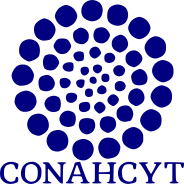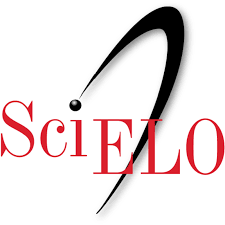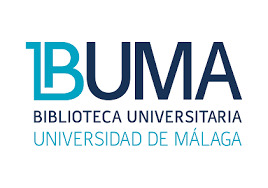Propagación vegetativa de Salvia elegans Vahl cultivada a diferentes intensidades lumínicas y evaluación de su efecto antiinflamatorio.
DOI:
https://doi.org/10.18387/polibotanica.59.11Palabras clave:
Lamiaceae, Crecimiento, InflamaciónResumen
Especies del género Salvia, tienen propiedades antioxidantes y nootrópicas, atribuidas a diferentes metabolitos secundarios. La propagación genera nuevos individuos a partir de yemas de una planta. Se evaluó el efecto de la luminosidad sobre la morfología de plantas propagadas y medir su efecto anti-inflamatorio. Se propagaron yemas apicales de Salvia elegans en dos condiciones de luminosidad: C1= 13.91 y C2= 4.94 (uM fotones·cm2·seg) Se evaluó el crecimiento y desarrollo (densidad estomática, área y color foliar); con las plantas obtenidas de ambas condiciones, se preparó un extracto hidroalcohólico y por cromatografía de capa fina, se detectó la presencia de grupos de metabolitos. La actividad antiinflamatoria se midió en el ensayo de edema local-inducido con TPA. El mayor crecimiento y densidad estomatal de las hojas fue en la condición C1, principalmente en el haz más que en el envés. El color de las hojas, parámetro sensible a la luminosidad, mostró diferencias entre C1 y C2, en las que se detectó ácido oleanólico y ursólico; pero sólo en C2 flavonoides. El extracto de las partes aéreas y raíces de C1 tienen mayor efecto farmacológico que C2. Las plantas producidas por hidroponia en C1 mostraron el mejor crecimiento, desarrollo y efecto antiinflamatorio.
Referencias
2. Aggarwal, A., & Mathur, A. (2020). Nexus between light and culture media on morphogenesis in Bacopa monnieri and saponin yield thereof. Heliyon, 6(10), e05245. https://doi.org/10.1016/j.heliyon.2020.e05245
3. Argueta, A., Asseleih, L. M., & Rodarte García, M. E. (1994). Atlas de las plantas de la medicina tradicional mexicana (Primera Edición). Instituto Nacional Indigenista.
4. Aydoğmuş, Z., Yeşİlyurt, V., & Topcu, G. (2006). Constituents of Salvia microphylla. Natural Product Research, 20(8), 775–781. https://doi.org/10.1080/14786410500462843
5. Bajalan, I., Mohammadi, M., Alaei, M., & Pirbalouti, A. G. (2016). Total phenolic and flavonoid contents and antioxidant activity of extracts from different populations of lavandin. Industrial Crops and Products, 87, 255–260. https://doi.org/10.1016/j.indcrop.2016.04.059
6. Bayat, H., & Moghadam, A. N. (2019). Drought effects on growth, water status, proline content and antioxidant system in three Salvia nemorosa L. cultivars. Acta Physiologiae Plantarum, 41(9), 149. https://doi.org/10.1007/s11738-019-2942-6
7. Dayani, S., & Sabzalian, M. R. (2016). Production of secondary metabolites in medicinal plants through hydroponic systems. In Controlled environment agriculture. (pp. 33–51). Nova Science Publishers, Inc.
8. Francisco-Nava, J. J., Jiménez-Aparicio, A. R. , De Jesús-Sánchez, A., Arenas-Ocampo, M. L., Ventura-Zapata, E., & Evangelista-Lozano, S. (2011). Estudio de la morfología y aclimatación de plantas de Laella eyermaniana RCHB. f. generadas in vitro. Polibotánica, 32, 107–117.
9. Gautam, R. D., Kumar, A., Kumar, R., Chauhan, R., Singh, S., Kumar, M., Kumar, D., Kumar, A., & Singh, S. (2021). Clonal Propagation of Valeriana jatamansi Retains the Essential Oil Profile of Mother Plants: An Approach Toward Generating Homogenous Grade of Essential Oil for Industrial Use. Frontiers in Plant Science, 12. https://doi.org/10.3389/fpls.2021.738247
10. GAY, A. P., & HURD, R. G. (1975). THE INFLUENCE OF LIGHT ON STOMATAL DENSITY IN THE TOMATO. New Phytologist, 75(1), 37–46. https://doi.org/10.1111/j.1469-8137.1975.tb01368.x
11. González-Chávez, M. M., Ramos-Velázquez, C. S., Serrano-Vega, R., Pérez-González, C., Sánchez-Mendoza, E., & Pérez-Gutiérrez, S. (2017). Anti-inflammatory activity of standardized dichloromethane extract of Salvia connivens on macrophages stimulated by LPS. Pharmaceutical Biology, 55(1), 1467–1472. https://doi.org/10.1080/13880209.2017.1305423
12. Gudoityte, E., Arandarcikaite, O., Mazeikiene, I., Bendokas, V., & Liobikas, J. (2021). Ursolic and Oleanolic Acids: Plant Metabolites with Neuroprotective Potential. International Journal of Molecular Sciences, 22(9), 4599. https://doi.org/10.3390/ijms22094599
13. Herrera-Ruiz, M., García-Beltrán, Y., Mora, S., Díaz-Véliz, G., Viana, G. S. B., Tortoriello, J., & Ramírez, G. (2006). Antidepressant and anxiolytic effects of hydroalcoholic extract from Salvia elegans. Journal of Ethnopharmacology, 107(1), 53–58. https://doi.org/10.1016/j.jep.2006.02.003
14. Hoagland, D. R., & Arnon, D. I. (1950). The water-culture method for growing plants without soil: Vol. C347 rev 1950 (Circular-347). Berkeley, Calif. : College of Agriculture, University of California.
15. Husin, Z. Bin, Shakaff, A. Y. B. Md., Aziz, A. H. B. A., & Farook, R. B. S. M. (2012). Feasibility Study on Plant Chili Disease Detection Using Image Processing Techniques. 2012 Third International Conference on Intelligent Systems Modelling and Simulation, 291–296. https://doi.org/10.1109/ISMS.2012.33
16. Ikeda, Y., Murakami, A., & Ohigashi, H. (2008). Ursolic acid: An anti‐ and pro‐inflammatory triterpenoid. Molecular Nutrition & Food Research, 52(1), 26–42. https://doi.org/10.1002/mnfr.200700389
17. Jiménez–Aparicio, A., & Gutiérrez, G. (2000). Propiedades ópticas: color. En: Métodos para evaluar propiedades físicas en la industria de alimentos. (J. Alvarado, Ed.). Editorial Acribia,.
18. Jiménez-Ferrer, E., Hernández Badillo, F., González-Cortazar, M., Tortoriello, J., & Herrera-Ruiz, M. (2010). Antihypertensive activity of Salvia elegans Vahl. (Lamiaceae): ACE inhibition and angiotensin II antagonism. Journal of Ethnopharmacology, 130(2), 340–346. https://doi.org/10.1016/j.jep.2010.05.013
19. Kalaycıoğlu, Z., Uzaşçı, S., Dirmenci, T., & Erim, F. B. (2018). α-Glucosidase enzyme inhibitory effects and ursolic and oleanolic acid contents of fourteen Anatolian Salvia species. Journal of Pharmaceutical and Biomedical Analysis, 155, 284–287. https://doi.org/10.1016/j.jpba.2018.04.014
20. Karpiński, T. M. (2020). Essential Oils of Lamiaceae Family Plants as Antifungals. Biomolecules, 10(1), 103. https://doi.org/10.3390/biom10010103
21. Kozłowska, W., Matkowski, A., & Zielińska, S. (2022). Light Intensity and Temperature Effect on Salvia yangii (B. T. Drew) Metabolic Profile in vitro. Frontiers in Plant Science, 13. https://doi.org/10.3389/fpls.2022.888509
22. Lake, J. A., Woodward, F. I., & Quick, W. P. (2002). Long‐distance CO2 signalling in plants. Journal of Experimental Botany, 53(367), 183–193. https://doi.org/10.1093/jexbot/53.367.183
23. Lin, K.-H., Lin, T.-Y., Wu, C.-W., & Chang, Y.-S. (2021). Protective Effects of Salicylic Acid and Calcium Chloride on Sage Plants (Salvia officinalis L. and Salviaelegans Vahl) under High-Temperature Stress. Plants, 10(10), 2110. https://doi.org/10.3390/plants10102110
24. Maggini, R., Tzortzakis, N., & Currey, C. J. (2022). Editorial: Soilless Culture for Vegetative Biomass Production and Specialized Metabolites: Medicinal, Aromatic, and Edible Plants. Frontiers in Plant Science, 13, 887487. https://doi.org/10.3389/FPLS.2022.887487/BIBTEX
25. Martínez-Gordillo, M., Bedolla-García, B., Cornejo-Tenorio, G., Fragoso-Martínez, I., García-Peña, M. del R., González-Gallegos, J. G., Lara-Cabrera, S. I., Zamudio, S., Martínez-Gordillo, M., Bedolla-García, B., Cornejo-Tenorio, G., Fragoso-Martínez, I., García-Peña, M. del R., González-Gallegos, J. G., Lara-Cabrera, S. I., & Zamudio, S. (2017). Lamiaceae de México. Botanical Sciences, 95(4), 780–806. https://doi.org/10.17129/BOTSCI.1871
26. Martínez-Hernández, G. B., Jiménez-Ferrer, E., González-Cortazar, M., Román-Ramos, R., Tortoriello, J., Vargas-Villa, G., & Herrera-Ruiz, M. (2021). Antidepressant and anxiolytic compounds isolated from Salvia elegans interact with serotonergic drugs. Naunyn-Schmiedeberg’s Archives of Pharmacology, 394(12), 2419–2428. https://doi.org/10.1007/s00210-021-02155-6
27. Mathias-Rettig, K., & Ah-Hen, K. (2014). El color en los alimentos un criterio de calidad medible. Agro Sur, 42(2), 57–66. https://doi.org/10.4206/agrosur.2014.v42n2-07
28. Mendoza, F., Dejmek, P., & Aguilera, J. M. (2006). Calibrated color measurements of agricultural foods using image analysis. Postharvest Biology and Technology, 41(3), 285–295. https://doi.org/10.1016/j.postharvbio.2006.04.004
29. Paje, L. A., Choi, J., Lee, H.-D., Kim, J., Yu, A. R., Bae, M.-J., Geraldino, P. J. L., & Lee, S. (2022). Phenolic acids and flavonoids from Salvia plebeia and HPLC-UV profiling of four Salvia species. Heliyon, 8(3), e09046. https://doi.org/10.1016/j.heliyon.2022.e09046
30. Pereira, O., Catarino, M., Afonso, A., Silva, A., & Cardoso, S. (2018). Salvia elegans, Salvia greggii and Salvia officinalis Decoctions: Antioxidant Activities and Inhibition of Carbohydrate and Lipid Metabolic Enzymes. Molecules, 23(12), 3169. https://doi.org/10.3390/molecules23123169
31. Ramírez-Zea, G., Chávez-Servia, J. L., & Archundia-Garduño E. (2016). Salvias del Estado de México, una perspectiva general (Primera edición). Secretaría de Desarrollo Agropecuario.
32. Ricciardi, G., & Ricciardi, A. (2000). Efecto de las variaciones estacionales sobre la composición química del aceite esencial de plantas de “Salvia morada” de Sáenz Peña (Chaco). Comunicaciones Científicas y Tecnológicas UNNE; Exactas, , 11.
33. Rodrigues, M. R. A., Kanazawa, L. K. S., Neves, T. L. M. das, Silva, C. F. da, Horst, H., Pizzolatti, M. G., Santos, A. R. S., Baggio, C. H., & Werner, M. F. de P. (2012). Antinociceptive and anti-inflammatory potential of extract and isolated compounds from the leaves of Salvia officinalis in mice. Journal of Ethnopharmacology, 139(2), 519–526. https://doi.org/10.1016/j.jep.2011.11.042
34. Schanda, J. (2007). Colorimetry: Understanding the CIE System. Wiley.
35. Thomas, P. W., Woodward, F. I., & Quick, W. P. (2004). Systemic irradiance signalling in tobacco. New Phytologist, 161(1), 193–198. https://doi.org/10.1046/j.1469-8137.2003.00954.x
36. Wang, H., Ngwenyama, N., Liu, Y., Walker, J. C., & Zhang, S. (2007). Stomatal Development and Patterning Are Regulated by Environmentally Responsive Mitogen-Activated Protein Kinases in Arabidopsis. The Plant Cell, 19(1), 63–73. https://doi.org/10.1105/tpc.106.048298

Descargas
Publicado
Número
Sección
Categorías
Licencia

Polibotánica por Departamento de Botánica de la Escuela Nacional de Ciencias Biológicas del Instituto Politécnico Nacional se distribuye bajo una Licencia Creative Commons Atribución-NoComercial-CompartirIgual 4.0 Internacional.



















